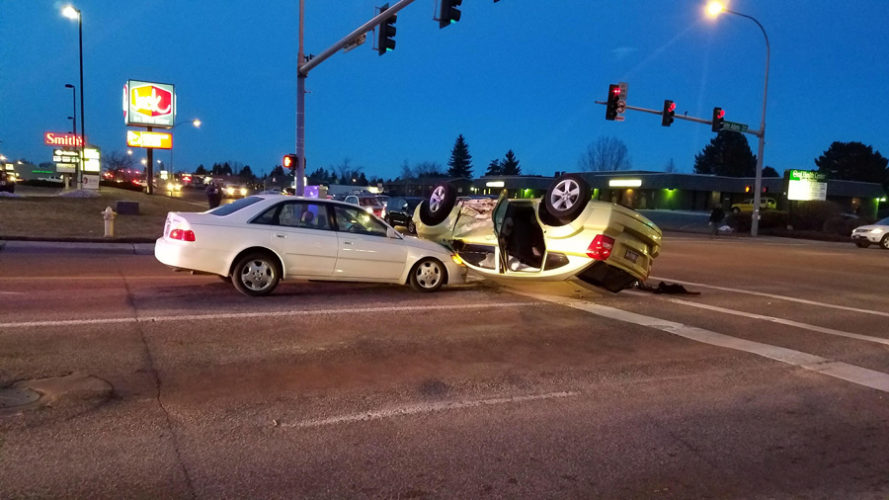
This rule is about visibility in heavier traffic situations and collision prevention. You cannot assume the other guy is paying attention — sometimes he’s not — and you cannot assume you will be readily visible. Many factors can prevent the other driver from having a clear view and keep him from recognizing your presence. Take responsibility to make sure he sees you.
As you approach an intersection where there is congestion, it is often difficult for oncoming traffic (especially left-turners) to see you. Especially in darkness, many drivers have problems with depth perception, making it difficult to distinguish individual vehicles from the background of lights, shadows, and colors. Additionally, backed-up traffic in a left turn lane may prevent oncoming traffic from having a clear view of your approach. Finally, if it is near twilight, or if the sun is behind you, the poor light may contribute to a dangerous situation for you.
One solution to this is to move right so that you become more distinctly visible to the oncoming vehicles. This is particularly important for a motorcyclist, but I do it just the same way in my pickup. Just the movement to the right can be enough for that oncoming driver to recognize your presence — the relative movement involved helps his eyes to pick you out. I also move to the right side of my lane so the on-comers’ view of my vehicle is not blocked by those vehicles lined up to my left to make left turns.
In addition, while riding my motorcycle, whenever I think I still may not be seen, I flash my headlight(s) momentarily (in the daytime) or flash my brights quickly (at night) to ensure the oncoming vehicle does see me against the backdrop of cityscape and headlights. Then, I keep an eye on his front wheels. If he doesn’t see me and starts to make a turn in front of me, I’ll most quickly catch the start of that move by seeing his tires start the turn, and I will be able to brake and swerve around him as necessary to avoid a collision. If I’ve been thinking ahead, I will have already slowed prior to getting close to the intersection. Slowing gives you more time to recognize and avoid a conflict.
All of these things, done together, help to ensure the other guy sees me so that I don’t end up meeting him by “accident.”
Key Points for Enhancing Visibility and Avoiding Collisions
- Move Right:
- Adjust your position within your lane to become more visible to oncoming traffic, especially when there are vehicles turning left.
- Use Lights:
- Flash your headlights during the day or your brights at night to ensure other drivers see you.
- Monitor Wheels:
- Watch the front wheels of oncoming vehicles for early signs of movement, indicating a potential turn into your path.
- Slow Down:
- Reduce your speed as you approach intersections to give yourself more time to react to any potential hazards.
- Anticipate Poor Visibility:
- Be extra cautious during twilight or when the sun is behind you, as these conditions can make you less visible to other drivers.
By taking these proactive steps, you increase your visibility and reduce the likelihood of a collision, ensuring a safer driving experience for everyone on the road.
